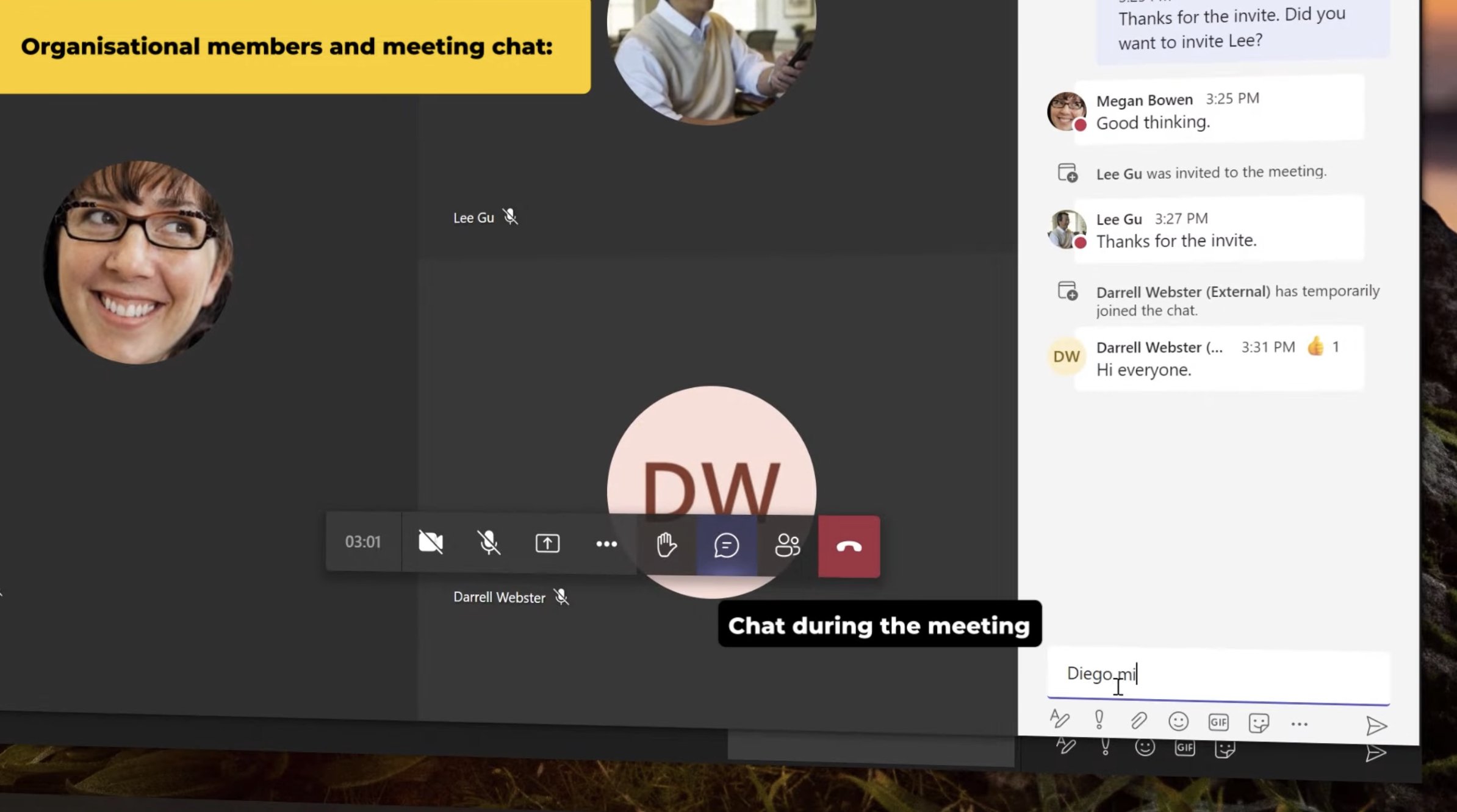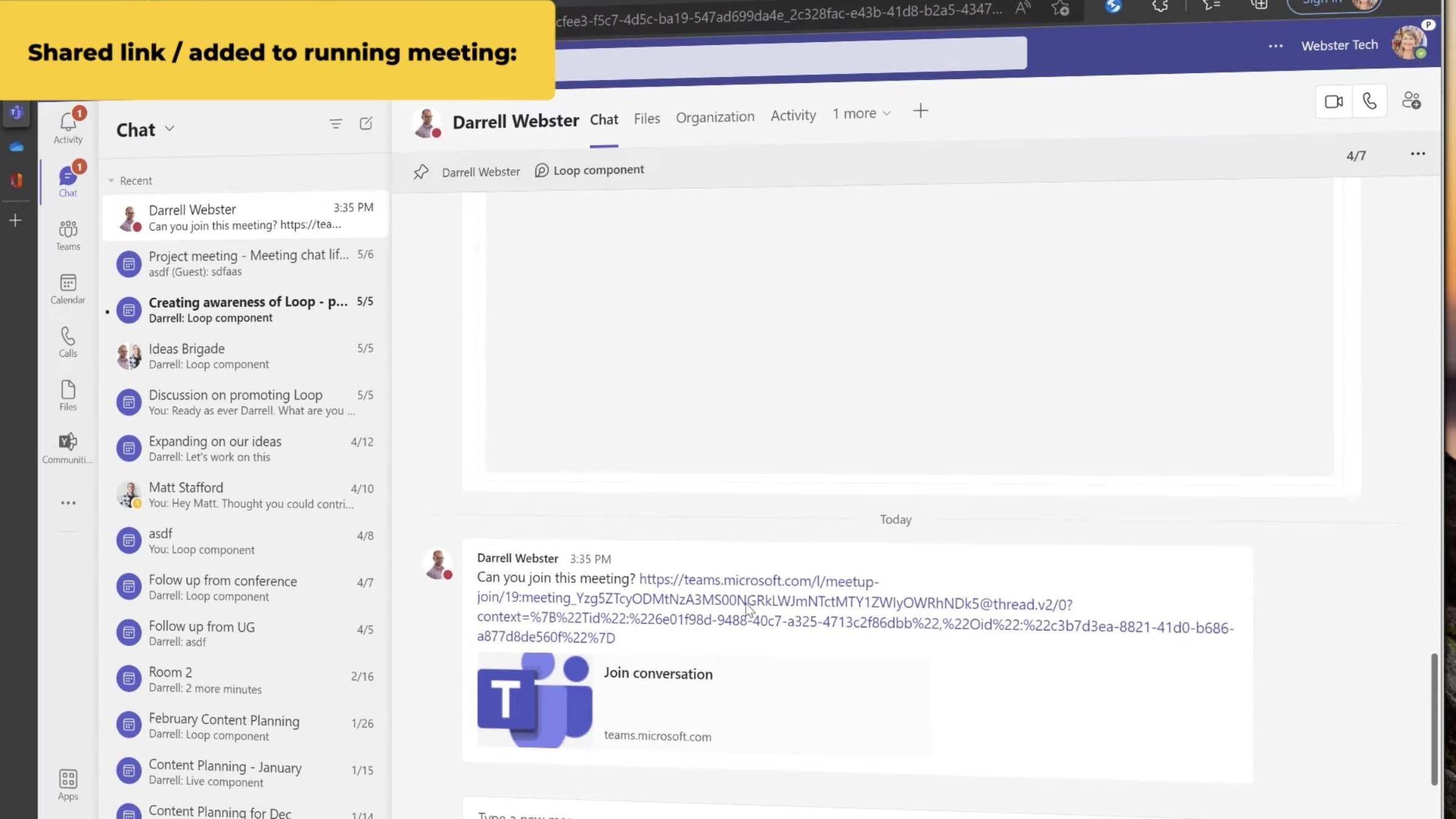How to access Microsoft Teams meeting chat before, during, and after
When I last wrote about accessing Microsoft Teams meeting chat, I was reflecting on 9 months of restriction and confusion. In 2021, Microsoft changed meeting chat to prevent meeting attendees from reading conversations they shouldn’t read. But it also prevented meeting chat from being a reliable collaboration environment. People we expect to have access to chat, didn’t have access before or after the meeting.
Since my last post, Microsoft have somewhat simplified access to meeting chat. At a minimum, you should now be able to safely assume that people from you organisation who are invited to the meeting, will be able to fully participate in chat.
After updates to Microsoft guidance in the support article “Chat in Teams meetings” and multiple tests, I have come up with some simplified advice.
Here are 3 principles to consider when organising and participating in Microsoft Teams meeting chat.
1. Members of your organisation invited to a Teams meeting can fully participate in meeting chat.
They received the original meeting invite.
They were invited as required or optional for the meeting.
They can join the chat before the meeting.
They can chat during the meeting.
They can continue to participate in the chat after the meeting.
If they didn’t attend the meeting, they can still participate in it’s chat.
When using a distribution group to invite people from your organisation, consider expanding the group.
If a distribution group has more than 150 members, they will only be able to access chat during the meeting.
Use Outlook to create the meeting invite.
When you expand the group in the invite, it adds each of the group members to the meeting invite. Then they will have full access to the meeting chat.
Sometimes a meeting invite is extended to people who didn’t receive the original invite. When a meeting is forwarded to a member of your organisation, they too can chat before, during and after a meeting. However, they don’t see any chat held before the invite was extended to them.
2. Guests must join a Teams meeting to participate in chat
Guests are people who are not members of your organisation.
When guests are invited to a Teams meeting, they cannot join the chat before the meeting. They must join the meeting when it begins to participate in meeting chat.
Some Teams meetings use a lobby before the meeting begins. Guests must be let in from the lobby before they can join the meeting chat. Once they have joined the chat, guests can also participate in chat after the meeting.
But if a guest doesn’t join the meeting, they won’t be able to participate in the chat after the meeting.
3. Using shared meeting links or adding people to a running meeting, will give temporary access to chat
Some people join meetings without a meeting invite addressed to them, by a shared link, or by being added to a meeting that has already started.
These attendees have temporary access to meeting chat.
Temporary access allows an attendee to access chat during a running meeting. But they must join the meeting.
After leaving the meeting, they cannot participate in or read any continued chat.
If you join a meeting using a link, like joining a webinar or large format meeting, you will have temporary access to the chat.
Although some webinars turn off chat for attendees to reduce distraction from the meeting content.
If you add a person to a running Teams meeting,
they will have temporary access to the chat.
They can see questions and resources posted in the chat.
But after they leave the meeting, they cannot participate in or read continued chat.
These three principles cover most scenarios for accessing meeting chat. As a meeting organiser, consider who you are inviting to a meeting and if you want them to have full or temporary participation in meeting chat.









